Veerle's Sidenotes A collection of thoughts on subjects of my interest.
Renault 5 E-Tech
A compact electric car that has generated significant anticipation since its concept debut in 2021 is the new Renault 5. It embodies what I believe the Honda E should have been. Both cars have captured my attention with their impressive designs, eliciting excitement upon first glance. Luckily, they remained faithful to the original concept without significant alterations.
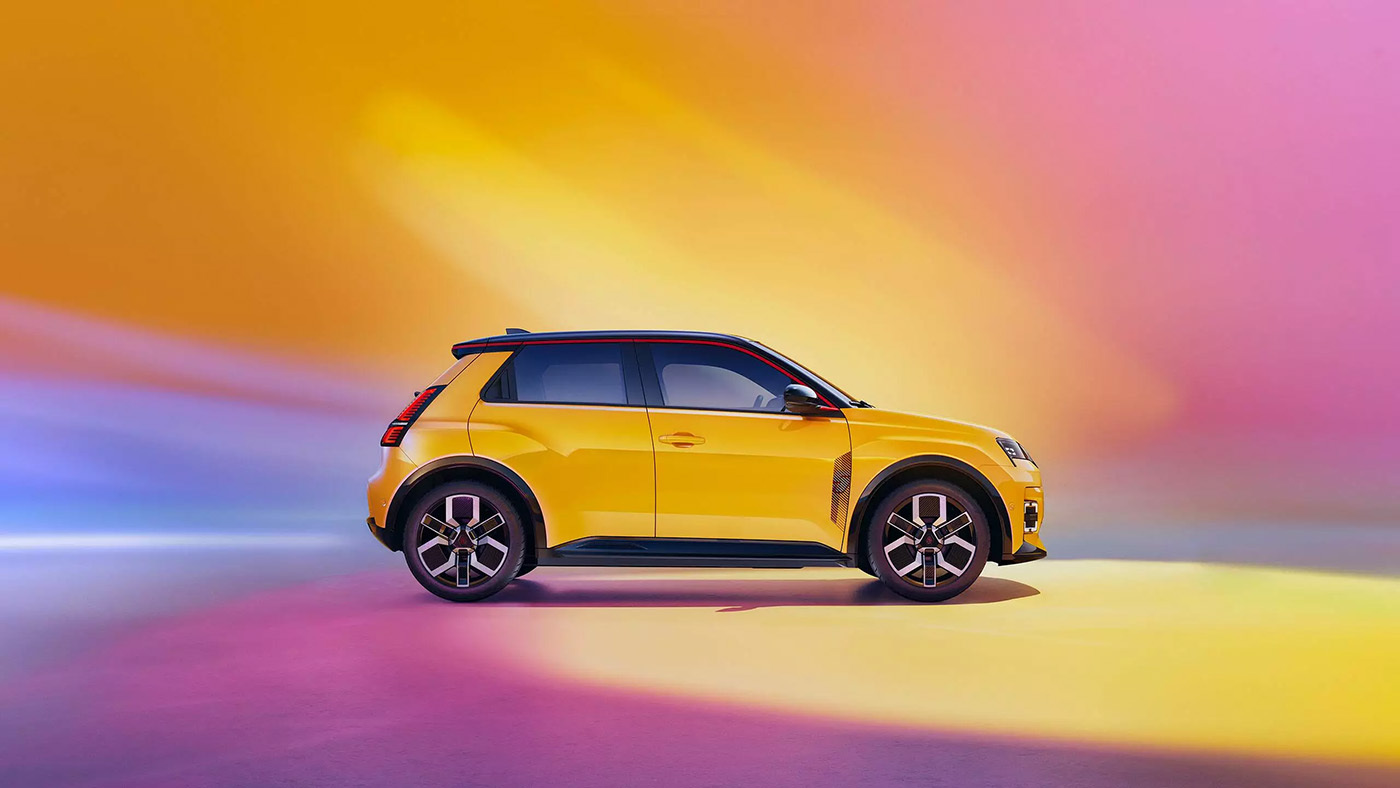
Yellow Pop
Creative!
The body shape not only mirrors that of its predecessors but also integrates several design features that refer to its past. For instance, the daytime running lights draw inspiration from the fog lights of the Renault 5 Turbo, while a charging indicator is situated on the hood, a nod to the location where cold air was once drawn in by a fuel engine in the classic car—a necessity rendered obsolete in modern times.
There are 5 colors to choose from:
- Yellow Pop
- Green Pop
- Starry Black
- Pearl White
- Night Blue
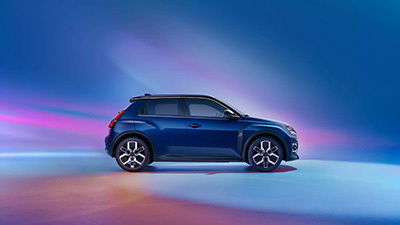
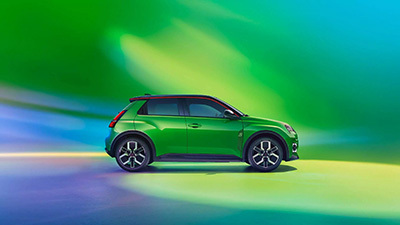
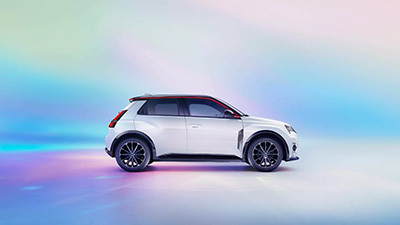
Aside from the above you also can choose from a range of options such as two-tone paint, roofline color variations, front roof, and side decorative strips, along with two wheel designs, to tailor the Renault 5 to your preferences. With 200 potential combinations available, you can create a customized look that reflects your individual taste.
Small is Beautiful
The Renault 5 may be compact on the outside, but it still accommodates up to five passengers. With the assistance of parking aids, manoeuvring and parking become effortless tasks. It's the perfect city car for everyday use. The length of the car is 3.92m and it has a boot capacity of 326L. Just what we need, an affordable alternative to the continuously growing large SUVs. Also equally important is its weight, just 1.450kg (3,196 lbs) making it as light as some comparable internal combustion engine cars. Reduced weight signifies a lower energy requirement to get moving, which is advantageous for overall consumption rates.
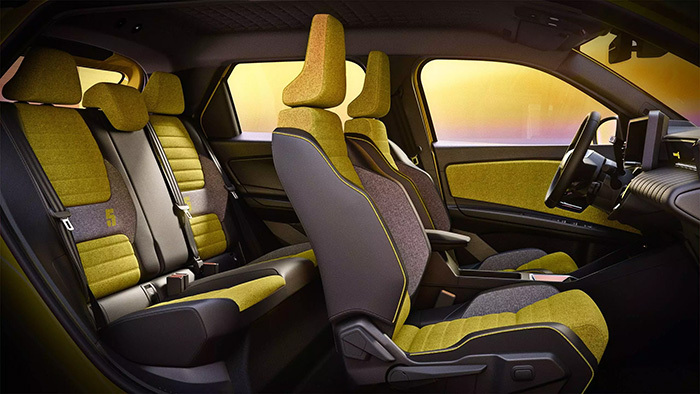
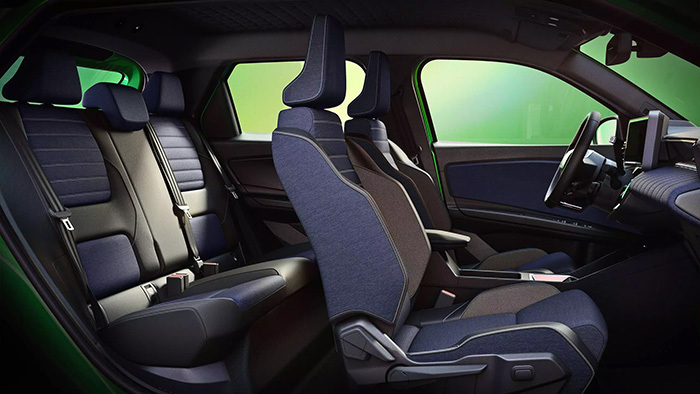
The seat design draws inspiration from the flame-spewing R5 Turbo, while the fabric used for covering them is crafted entirely from recycled materials. Additionally, certain trims feature dashboards and door panels constructed from recycled plastic. The roofline looks like felt and probably will do wonders for its acoustics. In my honest opinion, a quiet interior is a crucial aspect of an EV that I genuinely appreciate—it can make or break the overall experience.
Technical Details
Upon its autumn market debut, the model will initially be exclusively equipped with the larger 52 kWh battery (net) and the most robust engine, boasting 110 kW. All electric R5s will have an 11 kW AC onboard charger as standard. DC charging up to 100 kW is supported. The fast charging window spans approximately 30 minutes, enabling a charge level increase from 15% to 80% (SoC). Later there also be a variant with a 40 kWh battery, both batteries contain prismatic NMC (Nickel-Manganese-Cobalt) cells from Renault’s battery partner AESC. This all new Renault 5 sits on the so-called AmpR Small platform, intended for B-segment EVs and it will also be the foundation for the upcoming Renault 4.
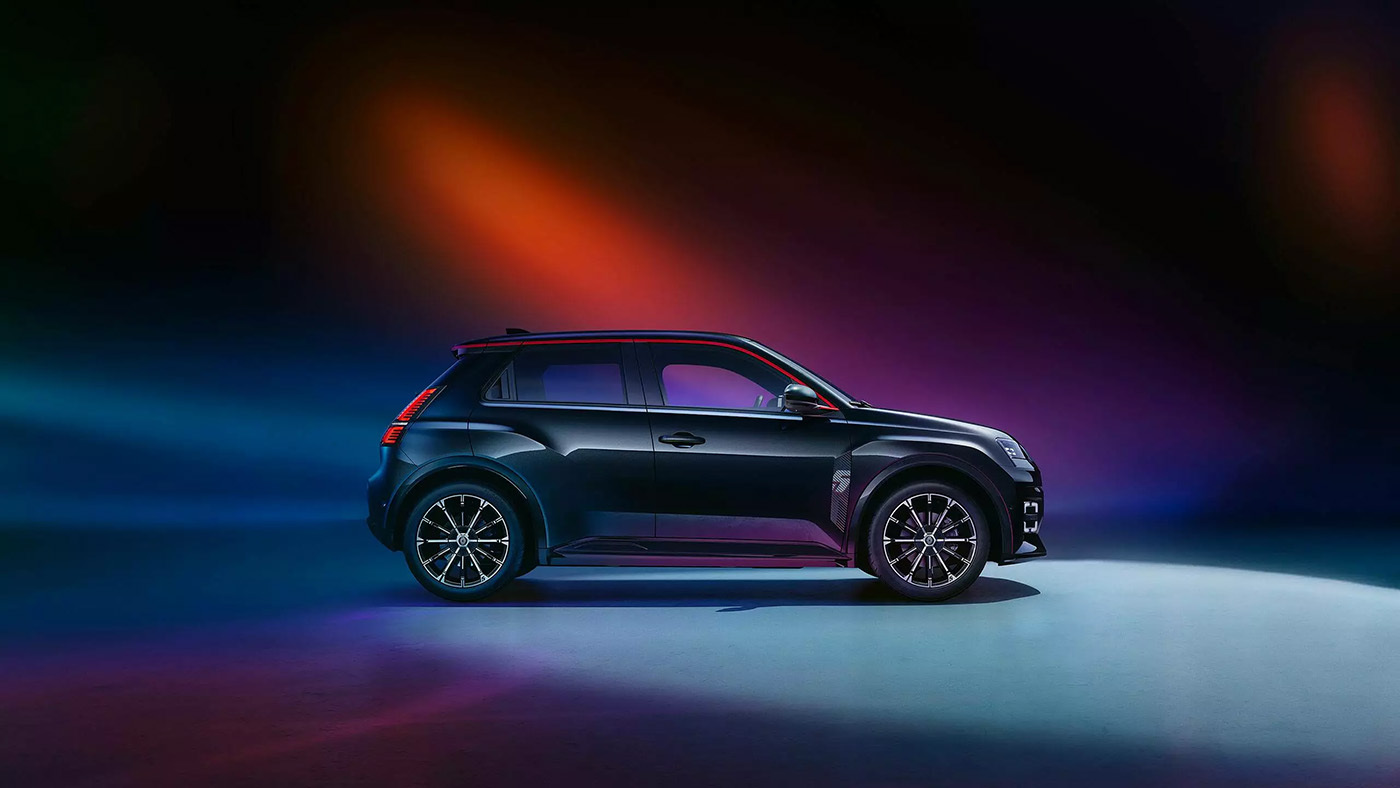
Starry Black
Inside you’ll also find two 10” screens, one that features the driving cluster and the other one takes on the role of a digital instrument cluster. The operating system is called openR link and has Google built-in: voice assistant, real-time navigation and more than 30 apps. They also launched an avatar called ‘Reno’ which supposedly interacts with the driver and passengers, both inside and outside the car. Because it integrates with the artificial intelligence chatbot ChatGPT, it can reply to questions using basically the whole internet as its source of information.
V2L and V2G
What excites me the most is that this price range (25.000 to 30.000 Euro) car will also come standard with a new AC bidirectional charger compatible with V2L (vehicle-to-load) and V2G (vehicle-to-grid) technologies. I'm pretty convinced that this pioneering system is set to become widely used. Most cars are sitting idle 90% of the time, making them quite useless. Now this technology will finally give the vehicle an actual purpose. Now it can become a real player in the energy ecosystem through the services of Mobilize, feeding electricity back into the grid when the price is right. As a result, users will enjoy significant savings on their electricity bills. The maximum power output is 3.7 kW.
Thanks to Mobilize V2G, cars become an energy reserve.
Unfortunately, there is a drawback: this feature won't be available in all of Europe at launch. Initially, Renault 5 owners will only have access to this feature in France and Germany this year, with availability in the United Kingdom scheduled for 2025. I have no idea about Belgium or the rest of Europe.
Made in Europe
The Renault 5 will be built in a factory in Douai (France), with the help of European suppliers less than 300 km away. This car isn't afraid to hide its origin, especially when you'll see the optional baguette holder (made by French basket-maker Marguerite Herlant).
Clean Air In My Home
In a prior Sidenote, I discussed the significance of ventilation in our homes. This subsequent article addresses the unsettling reality that the air you introduce from outside may not be as clean as perceived. Given its invisibility and predominantly odourless nature, it becomes essential to visualise this by employing a device capable of revealing particulate matter (PM). Particulate Matter (PM) comprises solid and liquid particles suspended in the air, categorized as coarse, fine, and ultrafine.
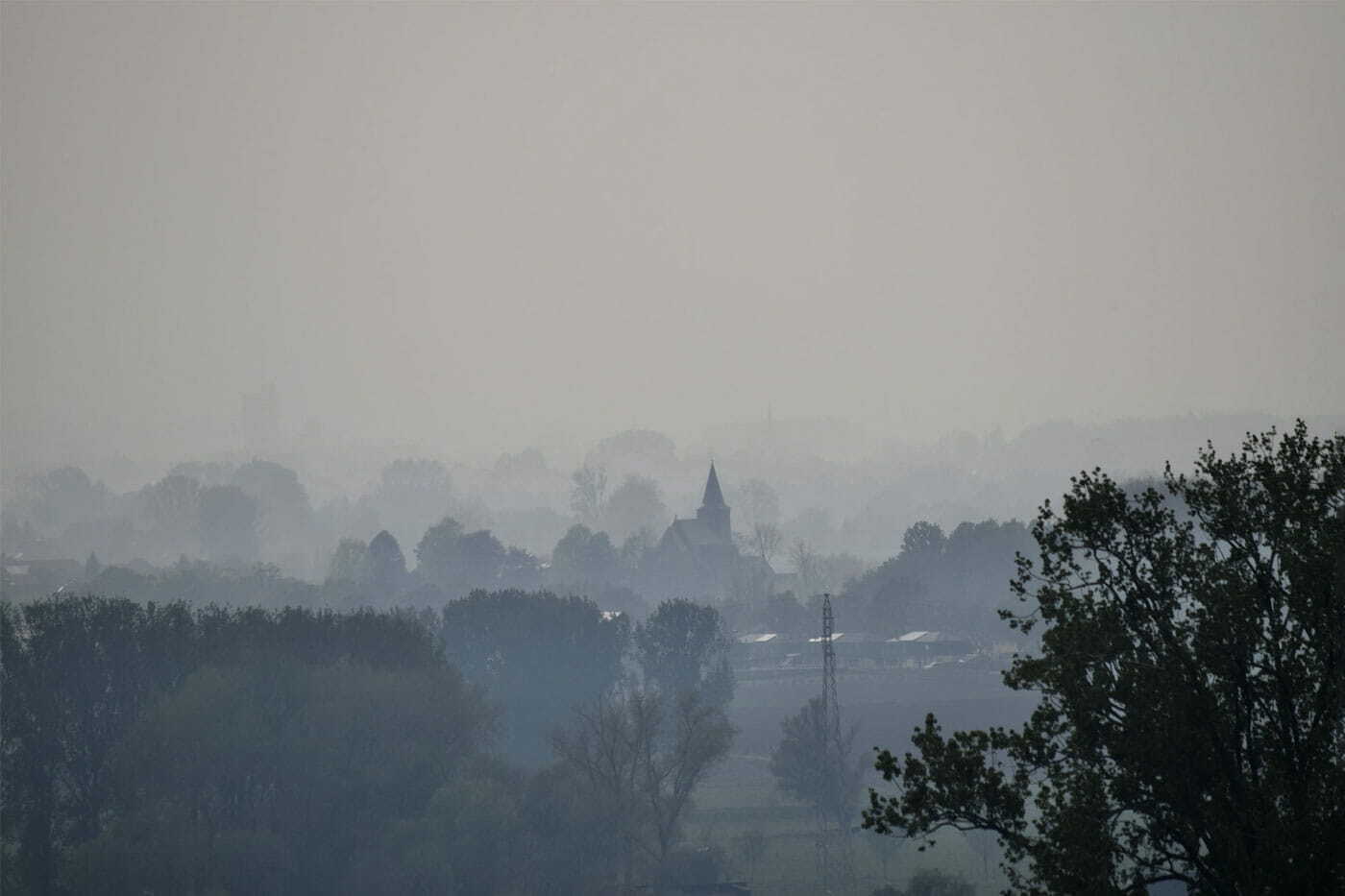
Oudenaarde, Belgium.
Many people might not be aware, just as I once was, but currently, 98 percent of Europeans are affected by air pollution. The concentrations of particulate matter frequently exceed the World Health Organization (WHO) standard of 5 micrograms per cubic meter, with at least two-thirds of the population experiencing levels that are double the recommended threshold.
Particulate matter originates from combustion processes in the exhaust gases of diesel engines and industrial operations. It is also generated through chemical reactions with ammonia in the agricultural sector and the heating of buildings.
'Clean' Diesel & Petrol
There are still individuals and lobbyists who believe/promote that 'clean diesel' exists and that the newer ones with Euro 7 and Euro 6 standard are A ok, so we should continue to use them as technology solved the problems. A quick bicycle ride wouldn’t have to take long to reveal the stark reality of their cleanliness—or lack thereof. Petrol isn’t much better.
Wood
The burning of wood is another factor with a notable impact. One can only hope that it is beautifully dried wood and not fiberboard, plywood, painted wood. Trust me, you can detect the difference by the smell.
'Green' Pellets
Oh and let’s not forget the ‘magical’ green pellets. The marketing sounds wonderful. “Burning wood or wood pellets brings us a little closer to nature. It invites us to use energy more consciously. Because heating yourself with wood or pellets is CO2 neutral. It does not produce greenhouse gas emissions”.
The necessity to burn them still contributes to increased pollution exposure by adding more ‘Ultra Fine Particles’. To get a good idea of how small these particles actually are, you need to know that one millimeter is one thousand micrometers and one million nanometers. The unit for the UFP concentration is particles/cm³. The unit for PM0.1 is micrograms per cubic meter (µg/m³). Ultrafine Particle (UFP) particles are so minuscule that, upon inhalation, they enter your bloodstream directly and have the potential to cause damage anywhere in your body. See illustration below for context.
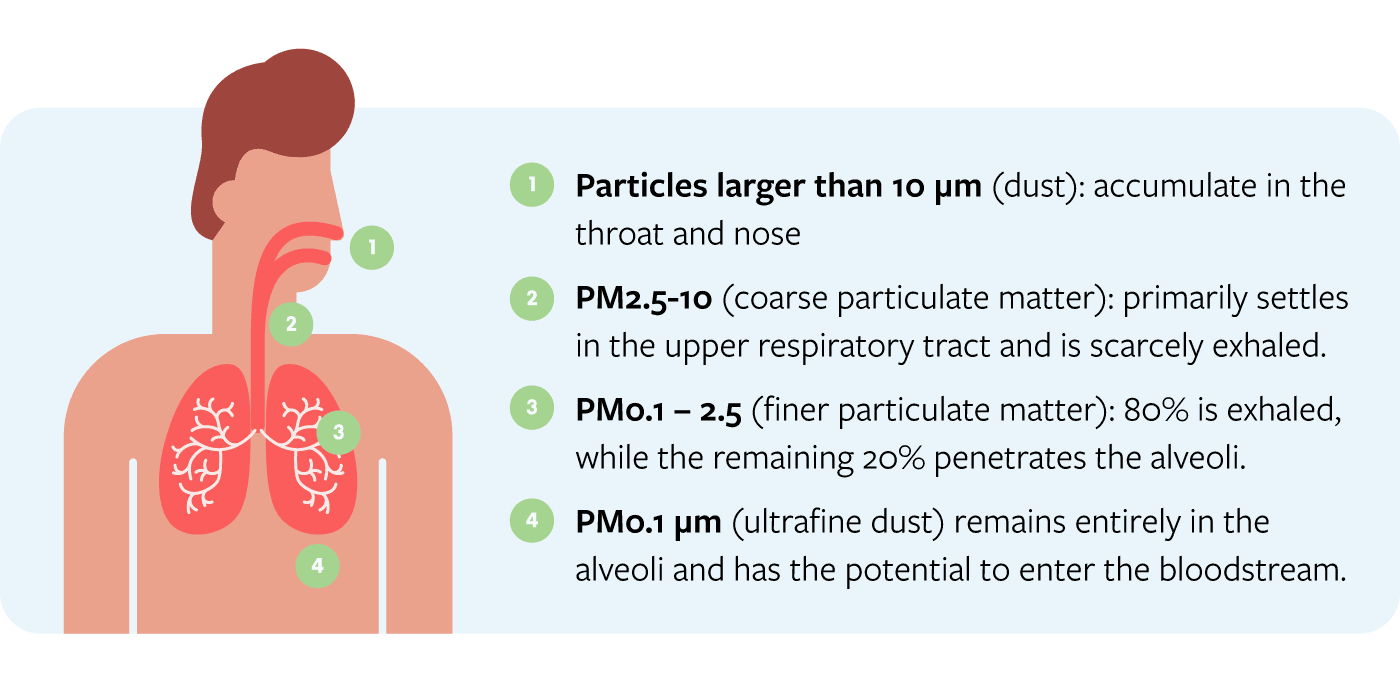
How particles enter the human body.
Every so often, I catch the scent of burning wood through the ventilation system when the wind carries it in the wrong direction, usually when one of the houses in the neighborhood decides to create a ‘cozy’ atmosphere by burning wood. If you ask yourself ‘which type of stove pollutes the least?’ You can find that out on the official site of the Flemish Environment Agency. (article in Dutch but you can translate it)
Premature Deaths
Roughly 300,000 premature deaths within the European Union are attributed to polluted air each year. Additionally, the burden is heaviest on the smallest lungs. Children, who breathe at a rate twice as fast and frequently through their mouths, face increased exposure to air pollution. Their proximity to the ground, where pollutants tend to accumulate, further heightens the risk. More than 90 babies die every week in Europe from air pollution (UNICEF).
A recent investigation conducted by the European Association for Medical Oncology (ESMO) indicates a potential association with breast cancer. While this connection has been proposed previously, a significant 20-year French study, involving thousands of women, now reveals that the risk of breast cancer rises by 28 percent with a 10 microgram per cubic meter increase in exposure to the most harmful dust particles—those smaller than 2.5 micrometers (PM2.5). This difference is roughly equivalent to the contrast between rural and urban areas in Europe.
In September 2023, the European Parliament resolved to harmonize the EU standards of 25 micrograms per cubic meter with the more rigorous guidelines set by the World Health Organization (WHO). However, the implementation of this adjustment is deferred until 2035, pending an agreement with the member states. The aim is to have no air pollution by 2050 in the interests of public health, ecosystems and biodiversity.
Air Purifier
That's enough introduction to finally address the topic I intended to write about. I felt it was necessary for you to better comprehend the context. As mentioned earlier, the initial step involves using a 'smart' sensor, such as the Ikea product called 'VINDSTYRKA'. This device features a straightforward color scale and a numerical indicator. Once you determine the pollution level, the next step is to purify the air using an air purifier. For now, let's focus on Ikea and discuss the 'STARKVIND'. While I can't guarantee its effectiveness, it is known to be an affordable option. To make it ’smart’ you need to add it to the IKEA Home Smart-app otherwise it’s just ‘dumb’ with a rotary and push button. The reviews are quite good. Just like the other smart products from IKEA, the underlying protocol for this smart air purifier is ZigBee. And that of course opens doors to other integrations. You also have support for Google Home and Google Assistant. There is also support for Amazon Alexa, Siri and Apple HomeKit.
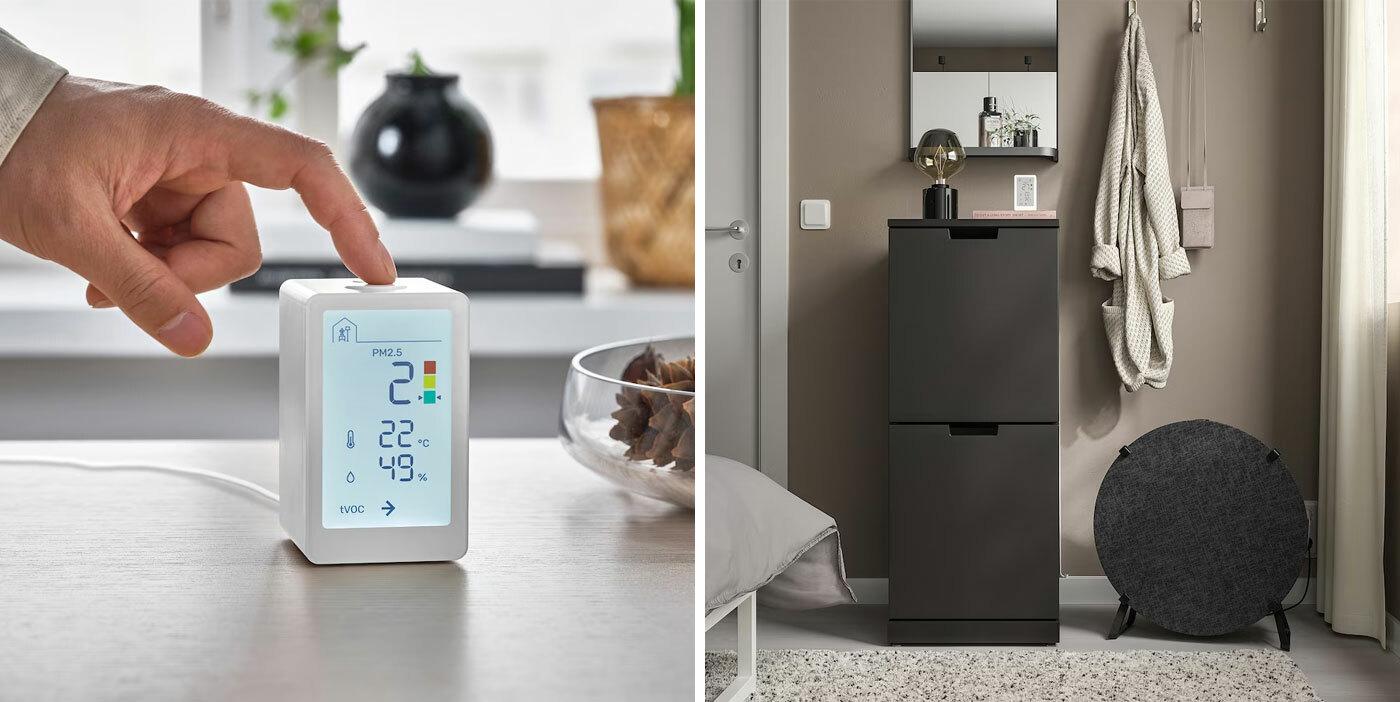
Ikea Vindstyrka and Starkvind.
I personally own the VINDSTYRKA, but for air purification, I prefer using the AEG AX 9. Although it's pricier than the Ikea model, I appreciate its aesthetic and, more importantly, its effectiveness. I acquired this device before installing a ventilation system, and it used to kick in almost every time I opened the windows. On numerous occasions I had numbers that were in the very poor scale.
While it operates less frequently now due to the ventilation system filters also capturing particles, it still plays a vital role in my home. Indoor activities also generate particulate matter and nitrogen dioxide, by burning tobacco, wood and candles and cooking with gas. This device will make it apparent how harmful these activities can be.
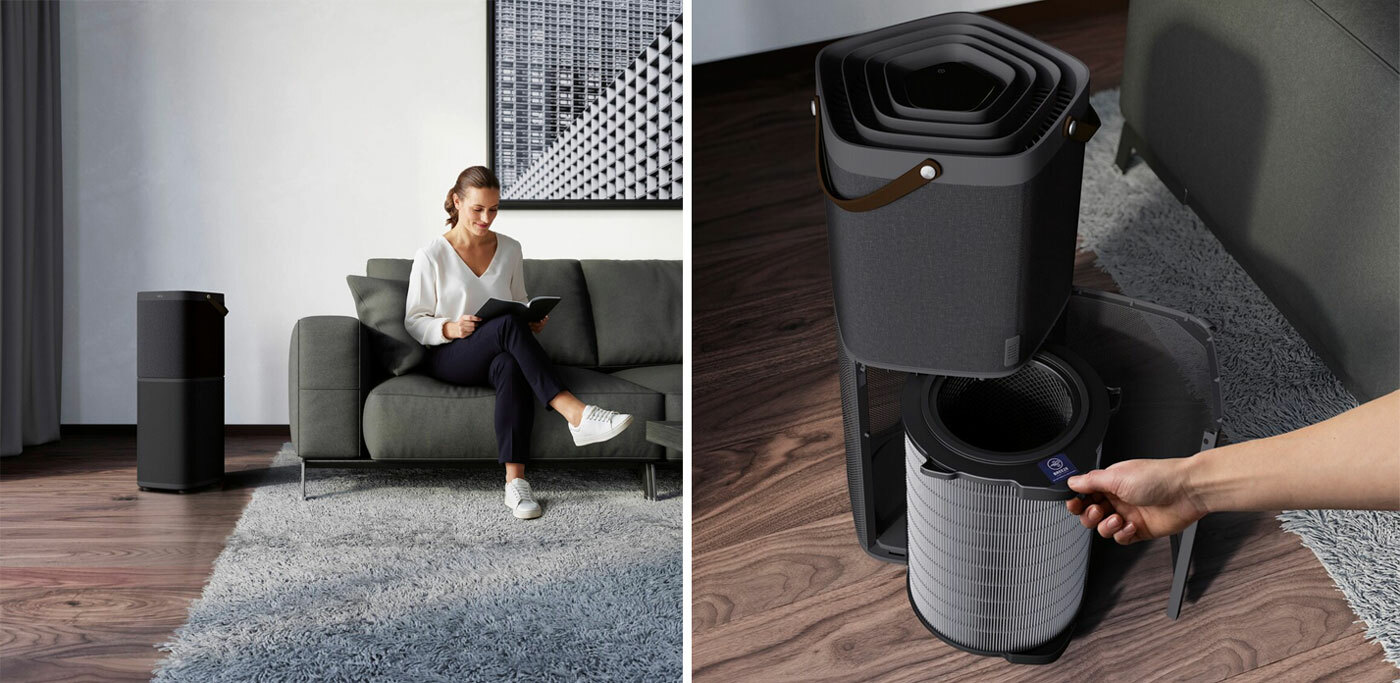
The AEG AX 9 display is straightforward, indicating the current mode and color scale that you are in. By connecting it to an app, you gain access to more comprehensive data such as PM 1, PM 2.5, PM 10 levels, humidity, temperature, and TVOC (Total Volatile Compounds). TVOC measures gases emitted by certain solids and liquids, and you can track all the above mentioned metrics over hours, days, and months.
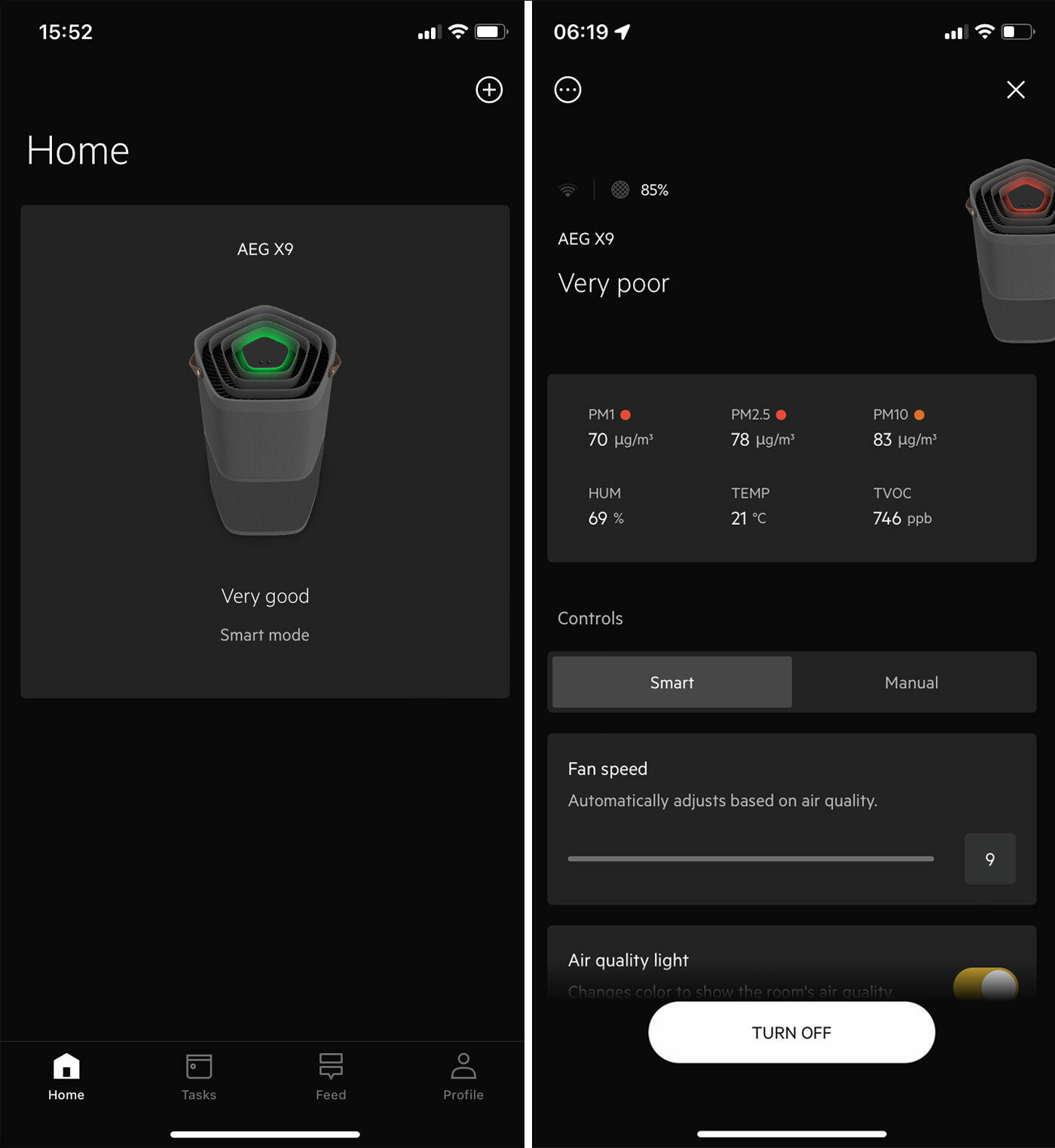
The AEG AX 9 iPhone app.
Dyson also has the Dyson Pure Cool.
What Else Can You Do?
The biggest of them all is ’Stop burning stuff’.
Walk, cycle or use public transport or share vehicle wherever possible. If you want to reduce the footprint of your food focus on what you eat, not whether your food is local. A must read by Hannah Ritchie. Eat less meat, particularly beef. Personally I only eat meat 3x a week now. When I do, I stick to 100 gram a day rule and it’s mostly chicken. Before I start doing this I consumed meat 7 days a week and in larger amounts. Honestly I’m not missing it at all.
Oudenaarde photo from Unsplash by moon-app .com
2023 In Numbers
This might sound contradictory. You see, I'm not particularly fond of lists, rankings and such. I’m more of a numbers, data, statistics person. Numbers, in particular, captivate my attention during walks and bike rides. During my walks I usually listen to podcasts, but when cycling, my focus remains on the road. I frequently challenge myself with small estimations, such as predicting the precise time of arrival or estimating distances between points A and B. During walks, I might estimate the number of 'macadams' when approaching the 30 km sign in the village or a specific intersection—quirky things like that.
As mentioned, statistics are always enjoyable, and here's what Strava has compiled for my 'Year In Sport 2023.' Inspired by the captivating article by Scott Boms, I decided to craft my own illustration:
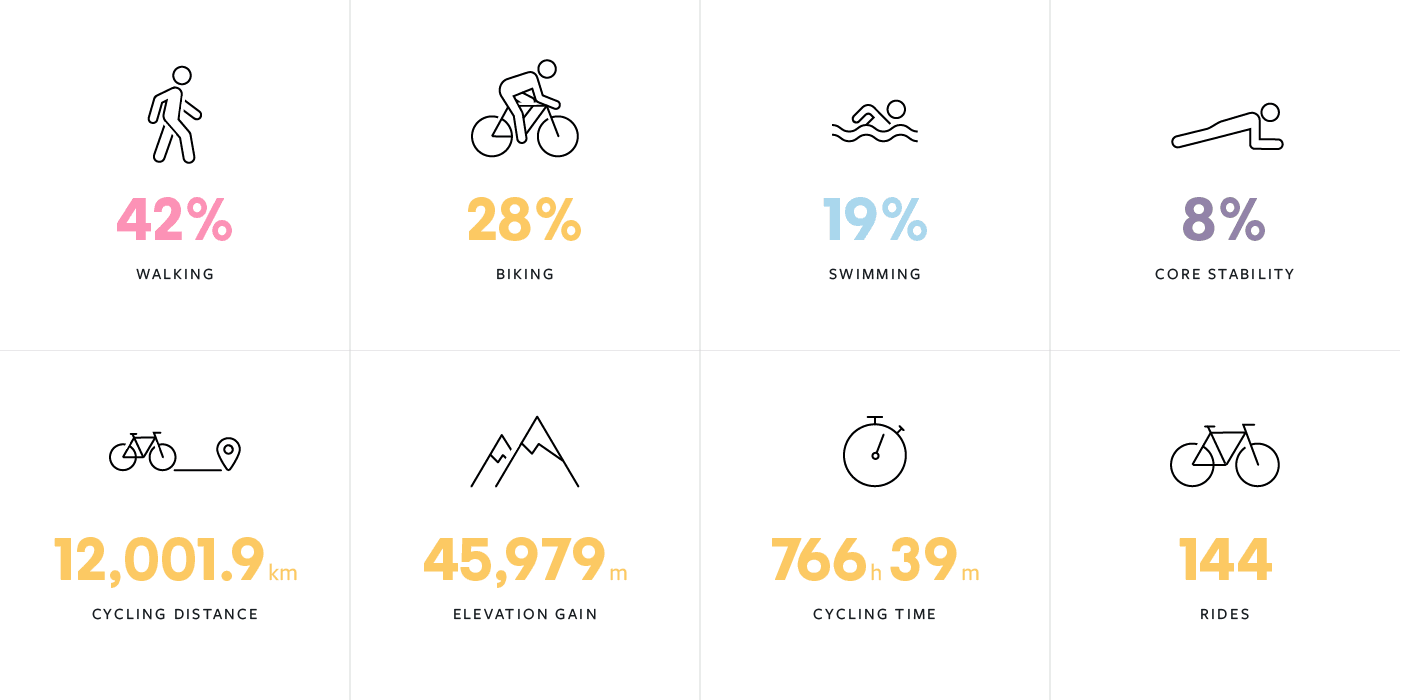
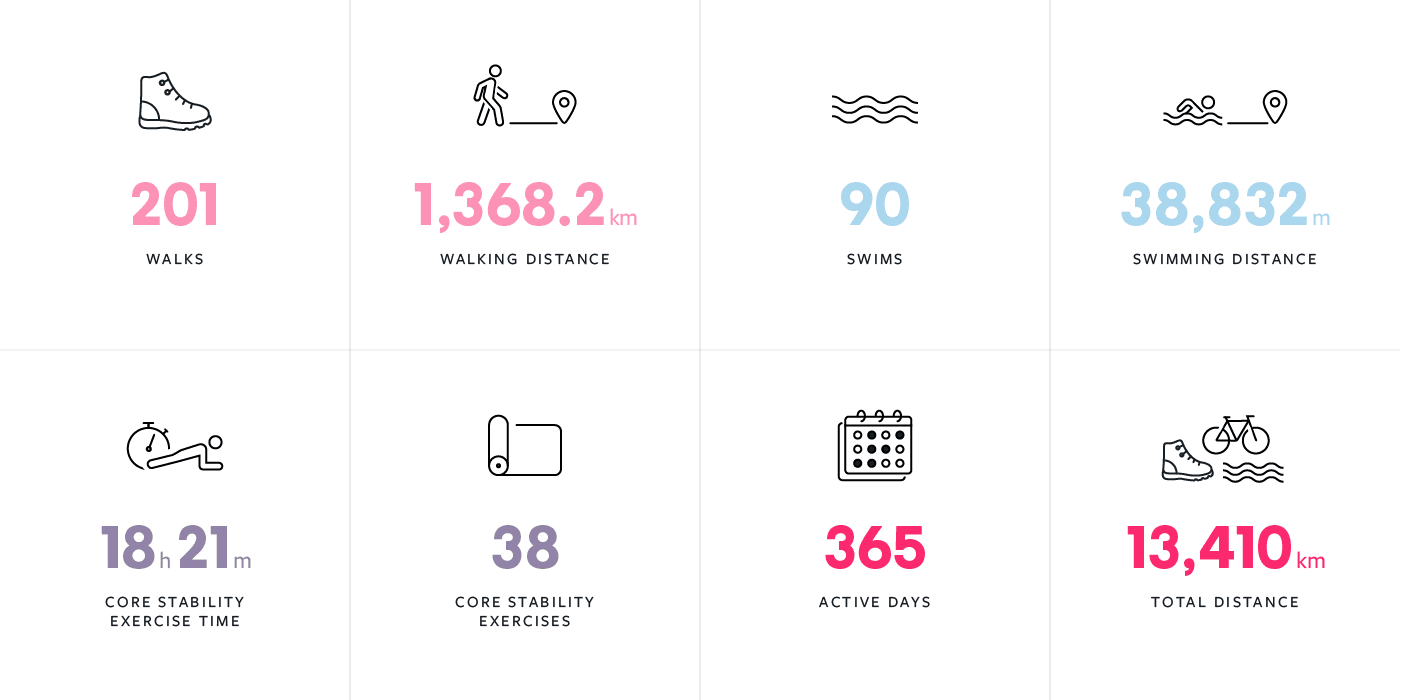
Ever since I own an Apple Watch, my focus has been on completing my activity rings, which entails engaging in at least 20 minutes of exercise each day, burning 560 calories daily, and standing up for a few minutes every hour. Personally, the daily stand goal holds particular significance for me, especially since I spend extended periods sitting while working. The watch prompts me to stand up if I haven't done so within the hour, a health-conscious feature in my opinion. I strive to meet the other goals daily for overall well-being. According to my Apple Watch, I have successfully closed all rings for the past 543 days. However, there was one day I recall when I forgot to charge my watch properly 🤦🏼♀️, disrupting the counting as certain rings remained unclosed on that day.
I'm thrilled to have achieved the set goal of riding 12,000 km again. However, we faced some challenges during the Summer and early Fall, with periods when we couldn't go for bike rides due to ongoing construction and installations around the house. Instead of being ahead of our usual schedule, we found ourselves behind when the wet and windy Fall weather set in. Since around mid-October, the weather has been consistently dreadful, with an unprecedented number of wet, windy, and grey days in 2023. Despite the challenges, we persevered. After each ride, we had to clean our bikes. Fortunately, the fenders provided substantial protection for both the bike and our apparel, but even with them, the bike ended up dirty after every single ride.

Photo of some of the many flooded meadows in Wontergem, a place nearby home
Fingers crossed for better weather in 2024 🤞🏼. Unfortunately, the first few days of this new year haven't been promising, with a few storms and heavy rain, even posing a flooding threat in our nearby neighborhood. However, next week I see some dry days with periods of sunshine showing up in the forecast, along with freezing temperatures. It’ll be cold for sure to ride my bike, but I don't mind as long as there's sunshine.

